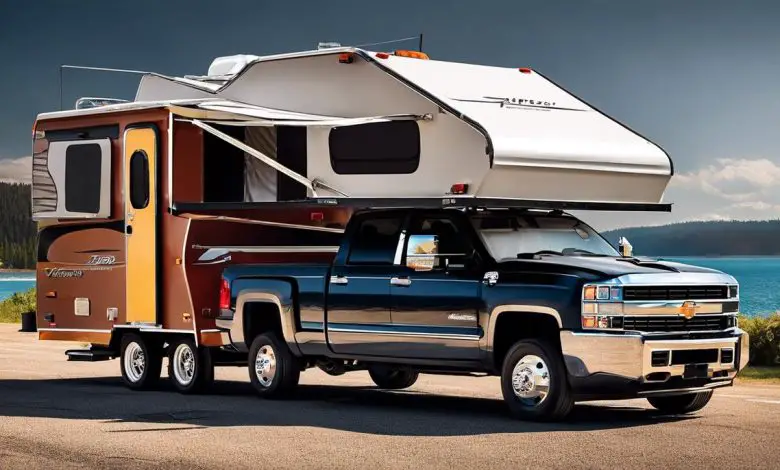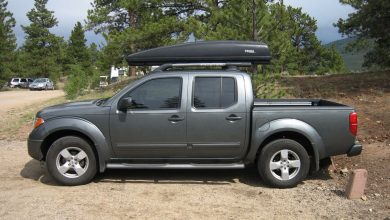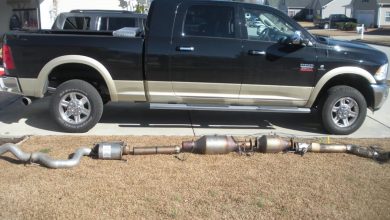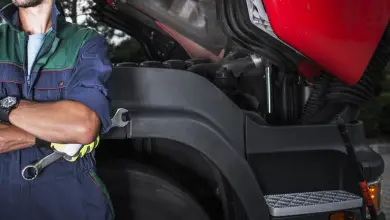The Legal Limits for Towing a Pop-Up Camper on Highways

Pop-up campers are a popular choice for camping enthusiasts due to their portability and ease of towing. However, one common question that arises is how fast can you drive with a pop up camper? While the specific speed limits can vary based on the manufacturer’s recommendations and the capabilities of your towing vehicle. There are some general guidelines to keep in mind when it comes to safely and legally towing a pop-up camper at different speeds.
How fast can you drive with a pop-up camper? In the United States, the legally allowed speed limit with a pop up camper is 55-65 mph which is generally the same as with any other trailer or RV. It’s important to adhere to these speed limits for safety and to avoid citations while enjoying your camping experience.
How fast can you drive with a pop up camper?
It’s important as a pop-up camper enthusiast to know and understand the legal speed limits and requirements for driving with a pop-up camper. This not only ensures a safe and smooth journey, but it also aligns with the law and protects your rights as a driver.
In the US, the speed limit for vehicles towing trailers like pop-up campers varies by state, but generally falls between 55 and 70 mph. California and Tennessee are among the states with the strictest limits, setting the bar at 55 mph. States like Arizona and Nebraska, on the other hand, tend to be more lenient with limits of up to 75 mph.
However, regardless of the legal limit, it’s prudent to maintain a speed that is comfortable and manageable based on the road conditions, weather, and traffic. It’s not unusual to see experienced drivers cruising at below the maximum speed, especially in hilly or curvy areas or in high winds.
Road conditions aside, the size and weight of the pop-up camper will also determine the optimum driving speed. Generally, the larger and heavier the camper, the slower you’ll want to drive. Overly fast speeds could result in decreased control of the camper and vehicle, particularly if there’s a strong gust of wind or a steep descent.
In relation to the weight of the camper, it’s worth noting that certain states impose weight restrictions on non-commercial vehicles. In Connecticut and Rhode Island, for example, trailers that exceed a weight of 3,000 lbs. must abide by a speed limit of 45 mph regardless of the posted freeway limit.
Besides speed regulations, other legal requirements to consider include mandatory trailer lights and mirrors. In many states, trailers are required to have brake lights, turn signals, and side and rear reflectors. Additionally, if the trailer obstructs the view from the vehicle’s rear-view mirrors, extension mirrors are required.
Also, ensure the load is securely fastened within the pop-up camper, as shifting weight during travel can cause hazardous conditions. This also entails checking the hitch, tow ball, and safety chains before setting off, thus confirming that all is well-maintained and in working order.
Understanding and adhering to these speed limits and requirements will contribute immensely to enjoying the open road with a pop-up camper, making every vacation an unforgettable journey. Safe travels!
When it comes to driving with a pop-up camper, it is important to consider how fast you can go, which directly relates to the question of whether camper shells can improve gas mileage.
Factors Affecting Speed Limits with a Pop-Up Camper
Weight of the pop-up camper: The weight of the pop-up camper will affect the speed limit at which it can be safely towed. Heavier campers may require lower speed limits to ensure safe towing and control.
Road conditions: The condition of the road, including the surface, may affect the speed limit at which the pop-up camper can be towed. Rough or uneven roads may require lower speed limits to prevent damage to the camper and ensure safety.
Towing vehicle: The type and capacity of the towing vehicle will also impact the speed limit for towing a pop-up camper. Smaller or less powerful vehicles may require lower speed limits for safe towing.
Wind and weather conditions: Windy or stormy weather conditions can affect the handling of the pop-up camper and towing vehicle, potentially requiring lower speed limits for safe travel.
Legal speed limits: Of course, legal speed limits for towing a pop-up camper will also need to be observed in any given area. It’s important to be aware of and follow the local speed limits for towing a camper.
Driver experience and comfort level: Personal factors such as the driver’s experience with towing a camper and their comfort level with driving at certain speeds will also play a role in determining the appropriate speed limits for towing a pop-up camper.
Legal Regulations and Speed Limits for Towing a Pop-Up Camper
When towing a pop-up camper in the US, it is important to adhere to legal regulations and speed limits to ensure safety on the road. The recommended speed range for towing a pop-up camper is typically between 55-65 mph. It is crucial to stay within these limits to prevent accidents and maintain control of the vehicle.
Exceeding the recommended speeds can put unnecessary strain on the vehicle and increase the risk of accidents, so it’s important to always stay within the safe towing limits.
Understanding the Manufacturer’s Recommendations for Speed Limits
The manufacturer’s recommendations for speed limits refer to the maximum safe speed at which a vehicle should be driven, as determined by the manufacturer based on the vehicle’s design and capabilities.
These recommendations are typically found in the vehicle’s owner’s manual and are based on factors such as the type of tires, suspension, braking system, and overall engineering of the vehicle.
It’s important for drivers to adhere to the manufacturer’s recommended speed limits to ensure the safety and performance of the vehicle. Exceeding these limits can lead to reduced vehicle control, increased risk of accidents, and accelerated wear and tear on the vehicle.
In some cases, exceeding the manufacturer’s recommended speed limits can also void the vehicle’s warranty and insurance coverage.
Ultimately, it is the responsibility of the driver to drive within the recommended speed limits and to adhere to all local, state, and federal speed regulations.
Safety Considerations When Driving with a Pop-Up Camper
When driving with a pop-up camper, it is crucial to consider the safety of yourself and other drivers on the road. It is essential to maintain a safe following distance to allow for sudden stops and maneuvers, as well as being aware of the camper’s potential sway, especially in high winds or when passing large vehicles.
Additionally, making wider turns to accommodate the additional length of the camper is essential to avoid obstacles and maintain control of the vehicle.
Utilizing proper towing equipment, such as a brake controller and weight distribution hitch, is imperative to ensure the stability and control of the camper while on the road.
Neglecting these safety considerations when driving with a pop-up camper can not only put your own life at risk, but also the lives of others on the road. Therefore, it is crucial to take these safety measures seriously and always prioritize safety over convenience.
Common mistakes to avoid
When driving with a pop-up camper, there are several common mistakes that drivers should be mindful of in order to ensure a safe and smooth journey.
One of the most critical errors to avoid is overestimating the towing vehicle’s capabilities. It is essential to thoroughly understand the vehicle’s towing capacity and not exceed it, as doing so can lead to dangerous situations on the road.
Additionally, ignoring weight distribution and trailer sway can also be a grave mistake. Properly distributing the weight inside the camper and using sway control devices can help prevent accidents and keep the trailer stable.
Furthermore, not adjusting driving habits for towing is another significant oversight. Towing a camper requires a different approach to driving, including allowing for longer braking distances, maintaining a slower speed, and being mindful of turns and lane changes.
By being aware of these common mistakes and taking necessary precautions, drivers can ensure a safe and enjoyable experience when navigating the roads with a pop-up camper.
Exploring the Ideal Speed Ranges for Different Pop-Up Camper Models
The ideal speed ranges for different pop-up camper models can vary depending on factors such as weight of the camper, the type of tires and suspension, and the manufacturer’s recommendations.
However, generally speaking, most pop-up camper models are designed to be towed at speeds ranging from 55 to 65 miles per hour.
Smaller, lighter pop-up campers may have a slightly higher speed range, while larger, heavier models may have a lower speed range. It’s important to consult the owner’s manual for your specific pop-up camper model to determine the recommended speed range for safe towing.
Exceeding the recommended speed range for your pop-up camper can increase the risk of accidents, damage to the camper, and excessive wear and tear on the towing vehicle. It’s important to always drive within the recommended speed range for your pop-up camper to ensure a safe and enjoyable towing experience.
Additionally, factors such as road conditions, weather, and traffic should also be taken into account when determining the ideal speed range for towing a pop-up camper. It’s always best to prioritize safety and follow the manufacturer’s recommendations for towing your specific pop-up camper model.
Community Guidelines and Best Practices for Responsible Towing Speeds
1. Obey speed limits: Follow all posted speed limits and adjust your speed based on road conditions, weather, and the weight and size of your towed load.
2. Maintain a safe distance: Keep a safe distance from other vehicles to allow for proper braking and maneuvering, especially when towing a heavy load.
3. Drive defensively: Anticipate potential hazards and be prepared to react quickly to any unexpected situations on the road.
4. Avoid sudden braking and acceleration: Sudden braking and acceleration can cause your towed load to sway or become unstable. Use gradual and smooth movements to maintain control.
5. Use appropriate equipment: Ensure that your towing vehicle and trailer are equipped with the proper brakes, suspension, and tires for safe towing.
6. Check for sway: Periodically check for any signs of sway or instability in your towed load, and make any necessary adjustments to address the issue.
7. Be mindful of wind and weather conditions: Windy and inclement weather can affect the stability of your towed load, so be aware of these conditions and adjust your driving accordingly.
8. Take regular breaks: Long hours of towing can be tiring, so take regular breaks to rest and refresh yourself to maintain alertness and focus.
9. Follow towing guidelines: Familiarize yourself with the specific towing guidelines for your vehicle and trailer, and adhere to them at all times.
10. Seek professional guidance: If you are new to towing or have any doubts about towing speeds and best practices, seek guidance from a professional or experienced tow operator.
Conclusion
In conclusion, when it comes to driving with a pop-up camper, it is important to adhere to legal speed limits and recommendations provided by the manufacturer. In the United States, the speed limit typically falls between 55 and 65 mph, although specific limits may vary by state.
It is crucial to drive at a speed that is safe and comfortable based on factors such as road conditions, weight of the camper, and weather. Additionally, following safety considerations, avoiding common mistakes, and practicing responsible towing speeds are essential for a smooth and enjoyable journey. By following these guidelines and prioritizing safety, drivers can make every camping experience with a pop-up camper both memorable and secure.




